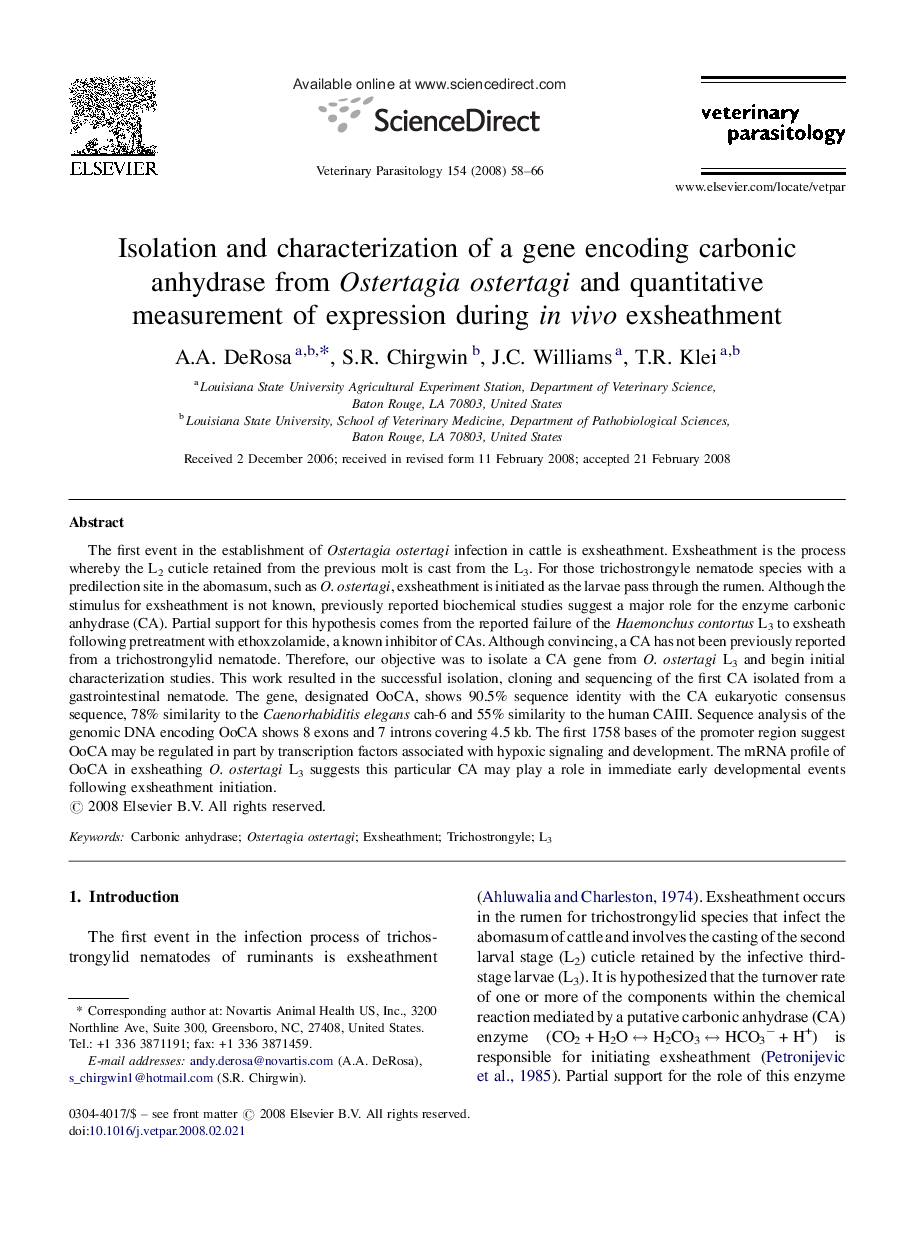| کد مقاله | کد نشریه | سال انتشار | مقاله انگلیسی | نسخه تمام متن |
|---|---|---|---|---|
| 2471480 | 1555768 | 2008 | 9 صفحه PDF | دانلود رایگان |

The first event in the establishment of Ostertagia ostertagi infection in cattle is exsheathment. Exsheathment is the process whereby the L2 cuticle retained from the previous molt is cast from the L3. For those trichostrongyle nematode species with a predilection site in the abomasum, such as O. ostertagi, exsheathment is initiated as the larvae pass through the rumen. Although the stimulus for exsheathment is not known, previously reported biochemical studies suggest a major role for the enzyme carbonic anhydrase (CA). Partial support for this hypothesis comes from the reported failure of the Haemonchus contortus L3 to exsheath following pretreatment with ethoxzolamide, a known inhibitor of CAs. Although convincing, a CA has not been previously reported from a trichostrongylid nematode. Therefore, our objective was to isolate a CA gene from O. ostertagi L3 and begin initial characterization studies. This work resulted in the successful isolation, cloning and sequencing of the first CA isolated from a gastrointestinal nematode. The gene, designated OoCA, shows 90.5% sequence identity with the CA eukaryotic consensus sequence, 78% similarity to the Caenorhabiditis elegans cah-6 and 55% similarity to the human CAIII. Sequence analysis of the genomic DNA encoding OoCA shows 8 exons and 7 introns covering 4.5 kb. The first 1758 bases of the promoter region suggest OoCA may be regulated in part by transcription factors associated with hypoxic signaling and development. The mRNA profile of OoCA in exsheathing O. ostertagi L3 suggests this particular CA may play a role in immediate early developmental events following exsheathment initiation.
Journal: Veterinary Parasitology - Volume 154, Issues 1–2, 14 June 2008, Pages 58–66